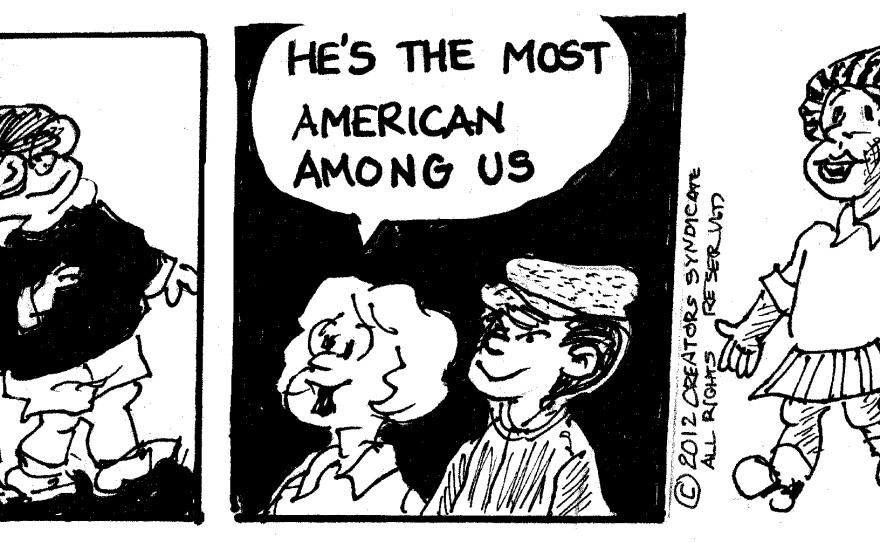
Before Jesse Jackson debuted his vision of the Rainbow Coalition as a multiracial organization devoted to racial and economic equality, Morrie Turner envisioned Rainbow Power--and he gave it to America in the digestible form of a regular cartoon panel called Wee Pals. In it, his multiracial group of young friends discussed racism, sexism, classism and a bunch of other social problems with deft humor and juvenile frankness. Turner was the nation's first black nationally syndicated cartoonist.
Morrie Turner died on Saturday in Sacramento, Calif. of natural causes. He was 90 years old, and had drawn a daily strip that gently enlightened America on race for almost half a century.
Ink in his blood
Born Morris Nolton Turner, Morrie Turner grew up drawing cartoons as a kid in his Oakland, Calif. hometown. He was the youngest of four; his mother was a nurse and his father one of the famous Pullman porters. After graduating from a local high school, he entered the Army Air Force, as a mechanic with the 477th Bombardment Group of the Tuskegee Airmen during World War II. While there, Turner drew a regular comic strip for Stars and Stripes, the military daily.
After the war, Turner drew while working as a clerk in the Oakland Police Department. He inked a strip for the Chicago Defender, one of the country's most prominent black papers. Turner became a full-time professional cartoonist in 1964.
At some point, Turner became friends with Charles Schultz. He's said to have asked the iconic cartoonist why there were no black characters in Schultz's beloved Peanuts strip. Shultz allegedly told Turner he should create a strip of his own with black characters. (Schultz later added the first black character, Franklin Armstrong, to the Peanuts gang in 1968). Turner liked Schultz's suggestion, and Wee Pals was born.
In the beginning, all the pals were black, but soon they became a multicultural posse, the visible manifestation of what Turner liked to call Rainbow Power. Turner told people who asked that he wanted to discuss all kinds of differences--racial, ethnic, gender, physical and mental abilities--in a positive way.
Spreading a message of tolerance
In 1965, the Wee Pals strip was syndicated and ran in five big newspapers across the country. Following Martin Luther King Jr.'s assassination in 1968, Wee Pals quickly spread to over 100 newspapers, as the issue of race became more widely discussed. Rick Newsome, founder of Creators Syndicate, believes about two million people now read Wee Pals in papers and online. "His impact was enormous," Newsome told the Sacramento Bee.
Turner continued to be widely read even as the country began to become more racially polarized. He was not afraid to say what he thought or be considered more conservative than some of his more politically edgy friends and colleagues. (One panel during the Black Power era showed a stern father telling his Afro-wearing son, "It's time to talk about Job Power.") His more pointed cartoons about race relations were reserved for black magazines like Ebony and Black World.
By the early 1970s, Wee Pals made it onto the small screen as a Saturday morning cartoon called "Kid Power." The messages of tolerance and friendship were broadcast loud and clear for its young viewers.
Morrie Turner drew a Wee Pals cartoon for every day of the week, right up until his death. Wee Pals would have celebrated its 49th anniversary this February.
Copyright 2014 NPR. To see more, visit www.npr.org.






